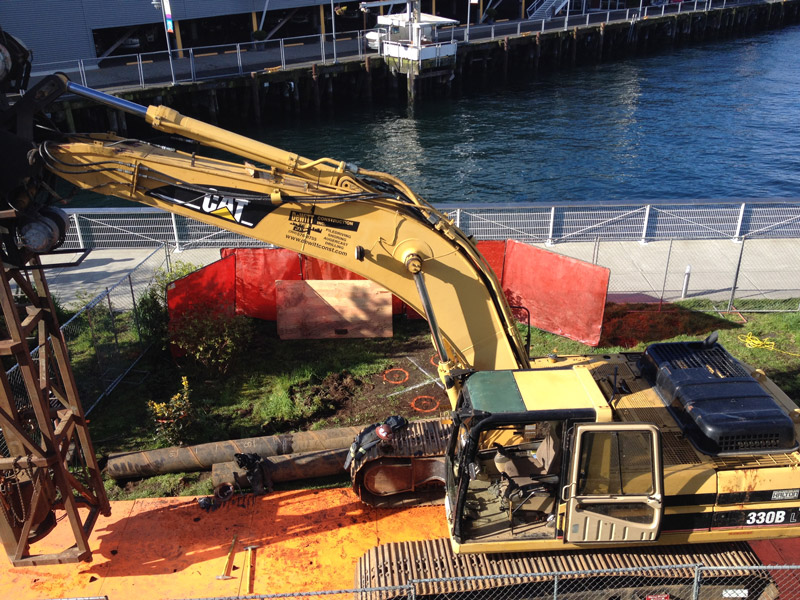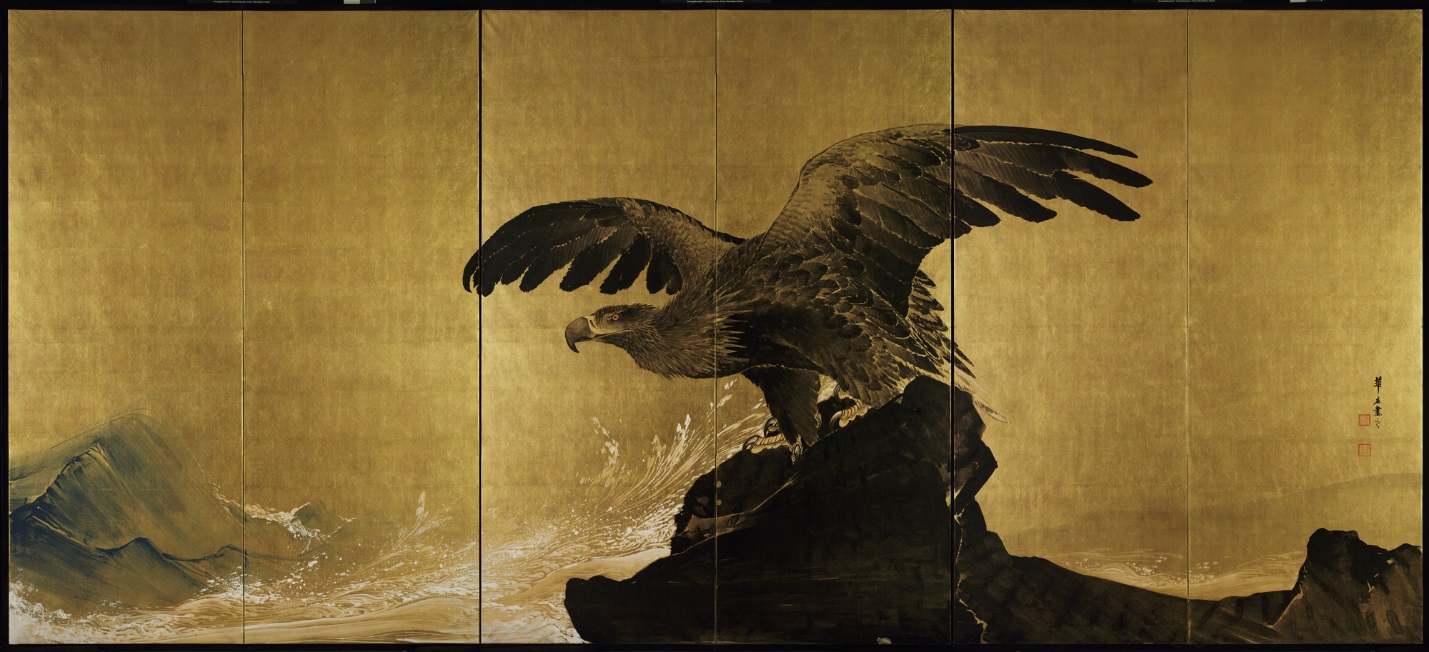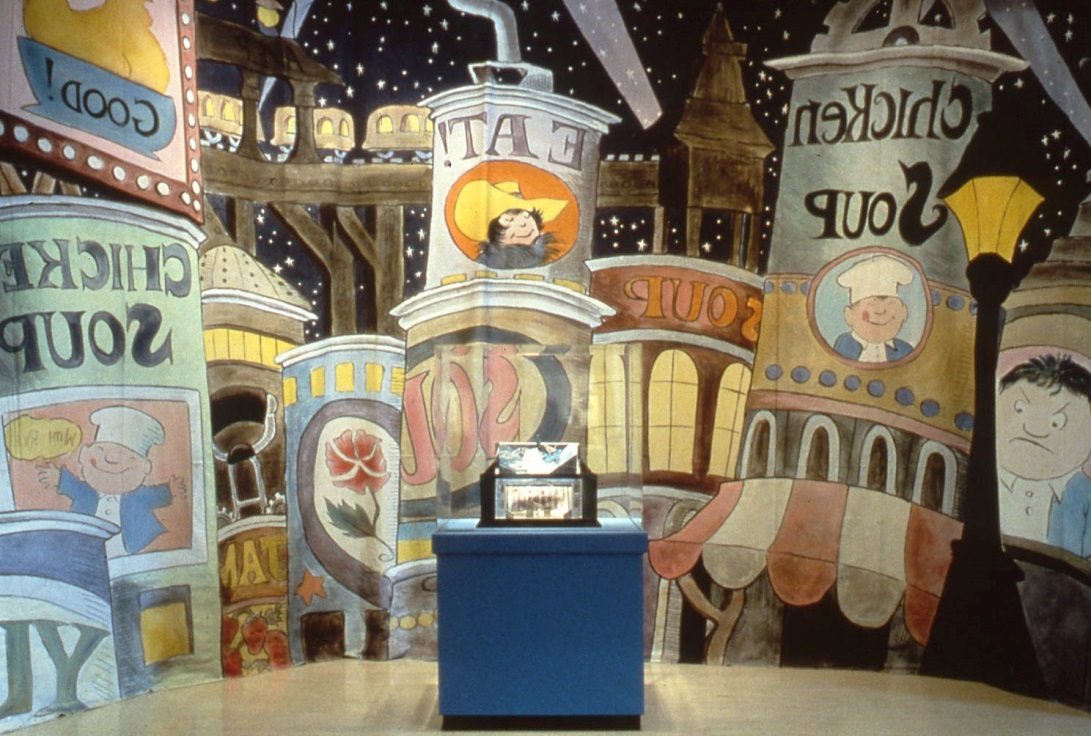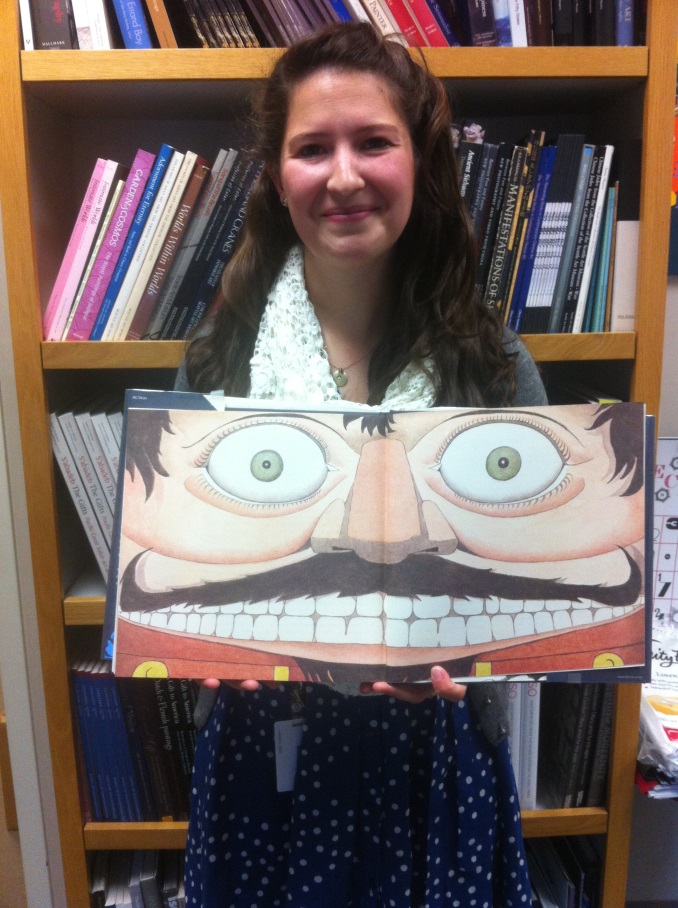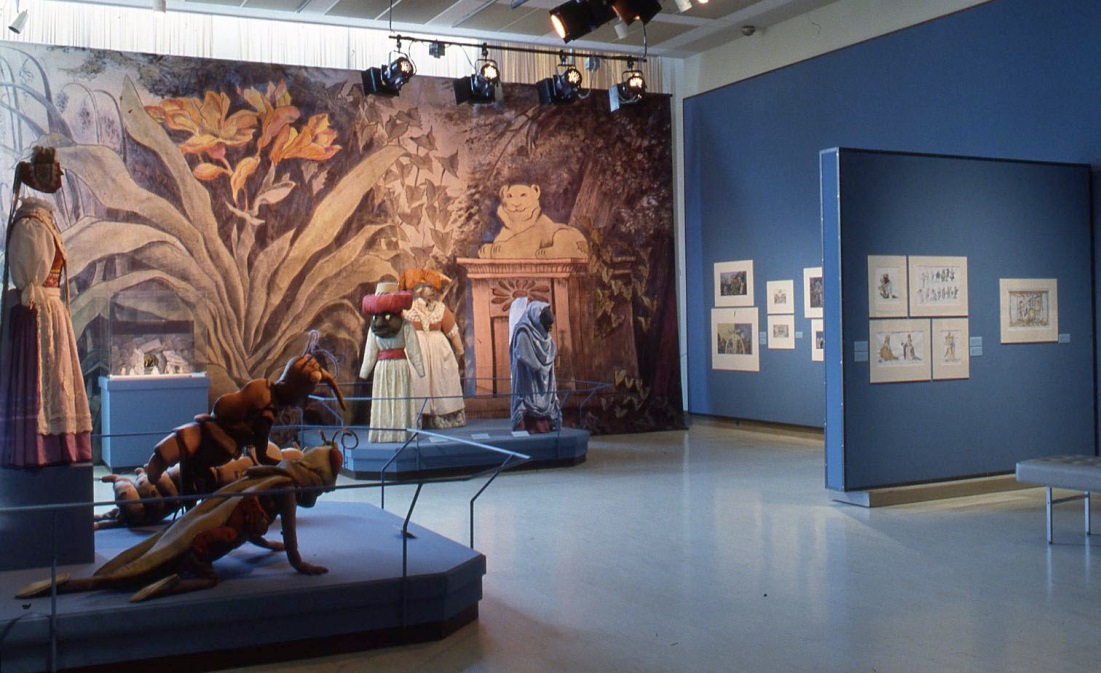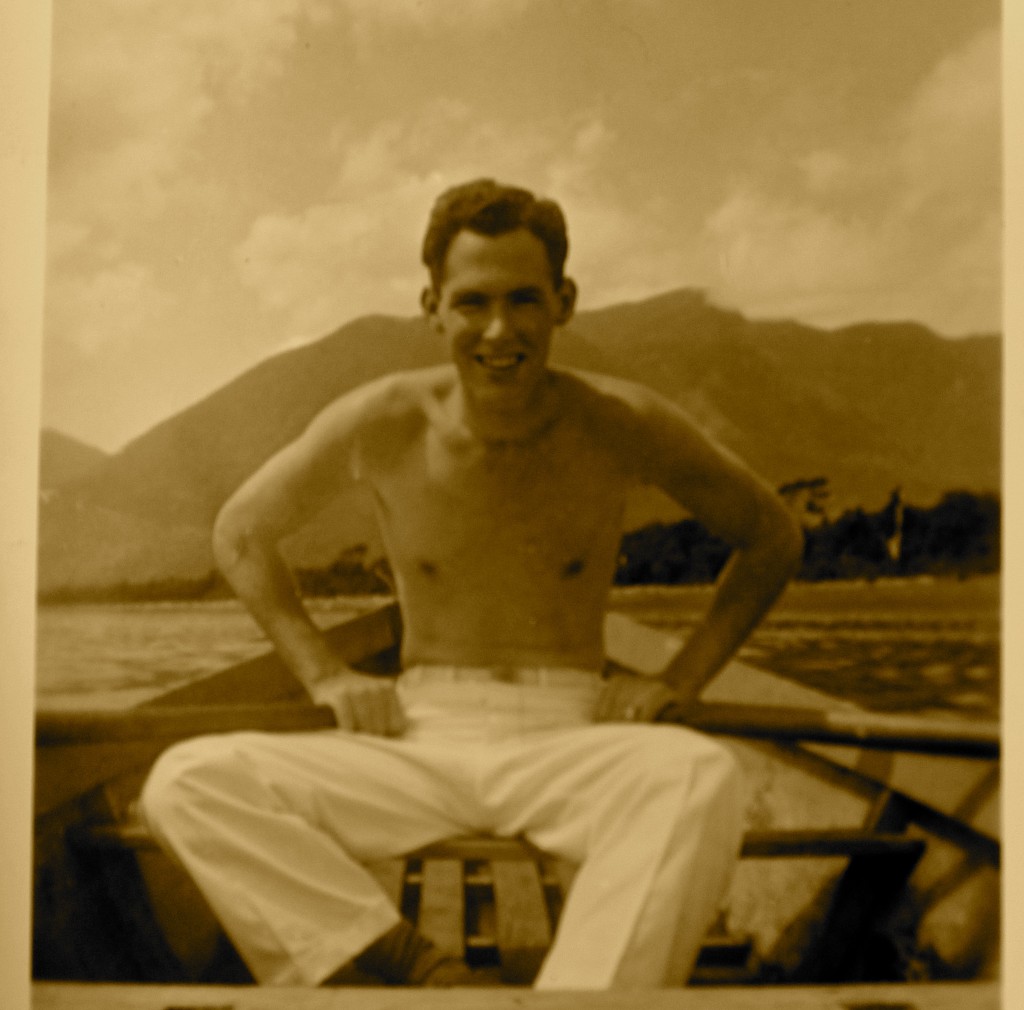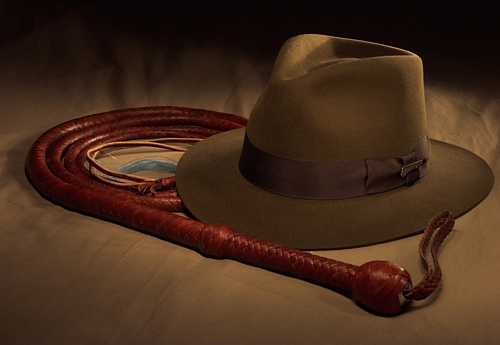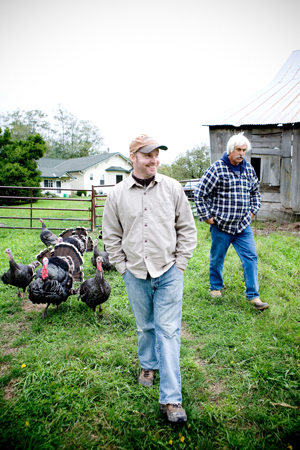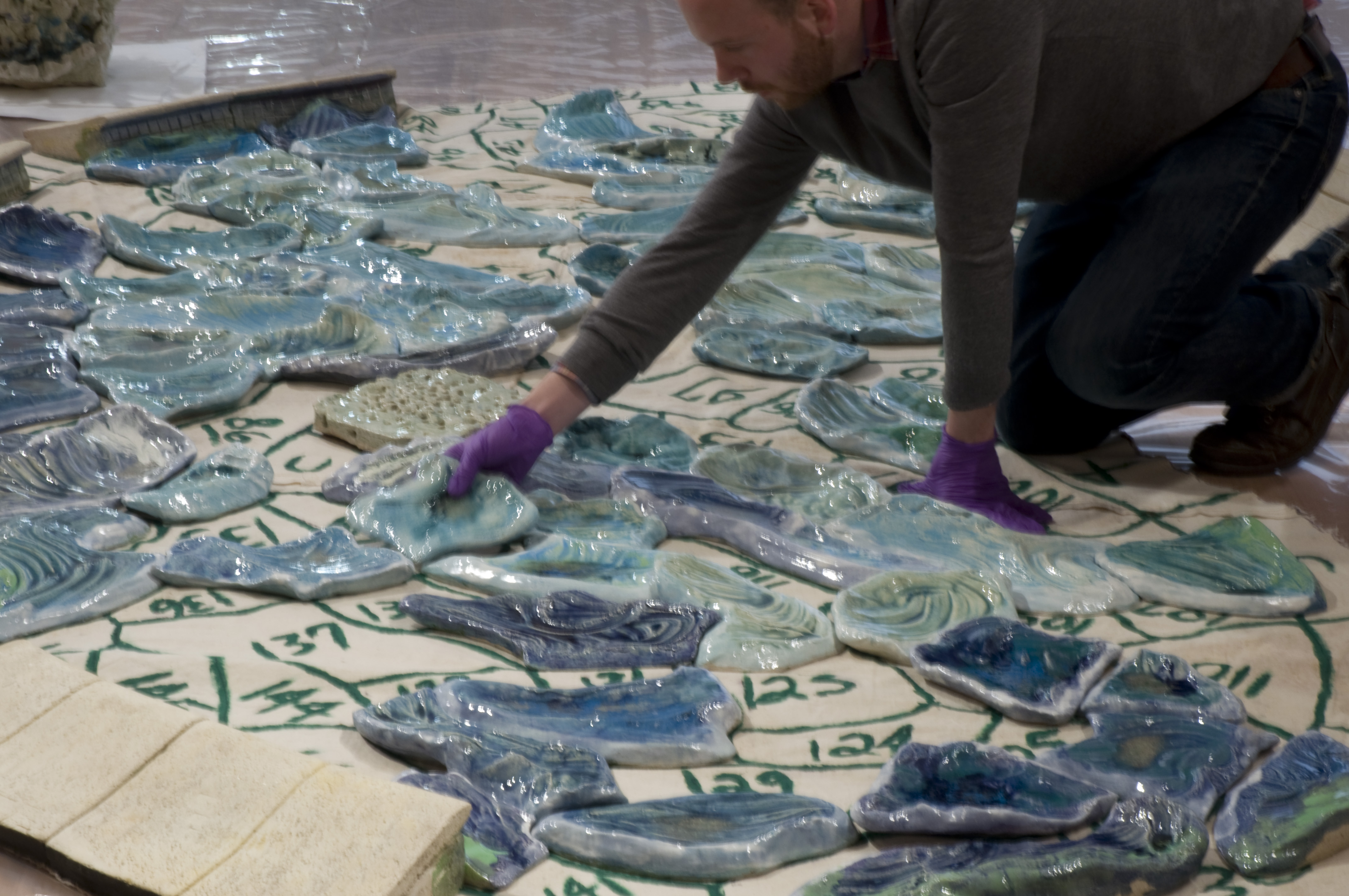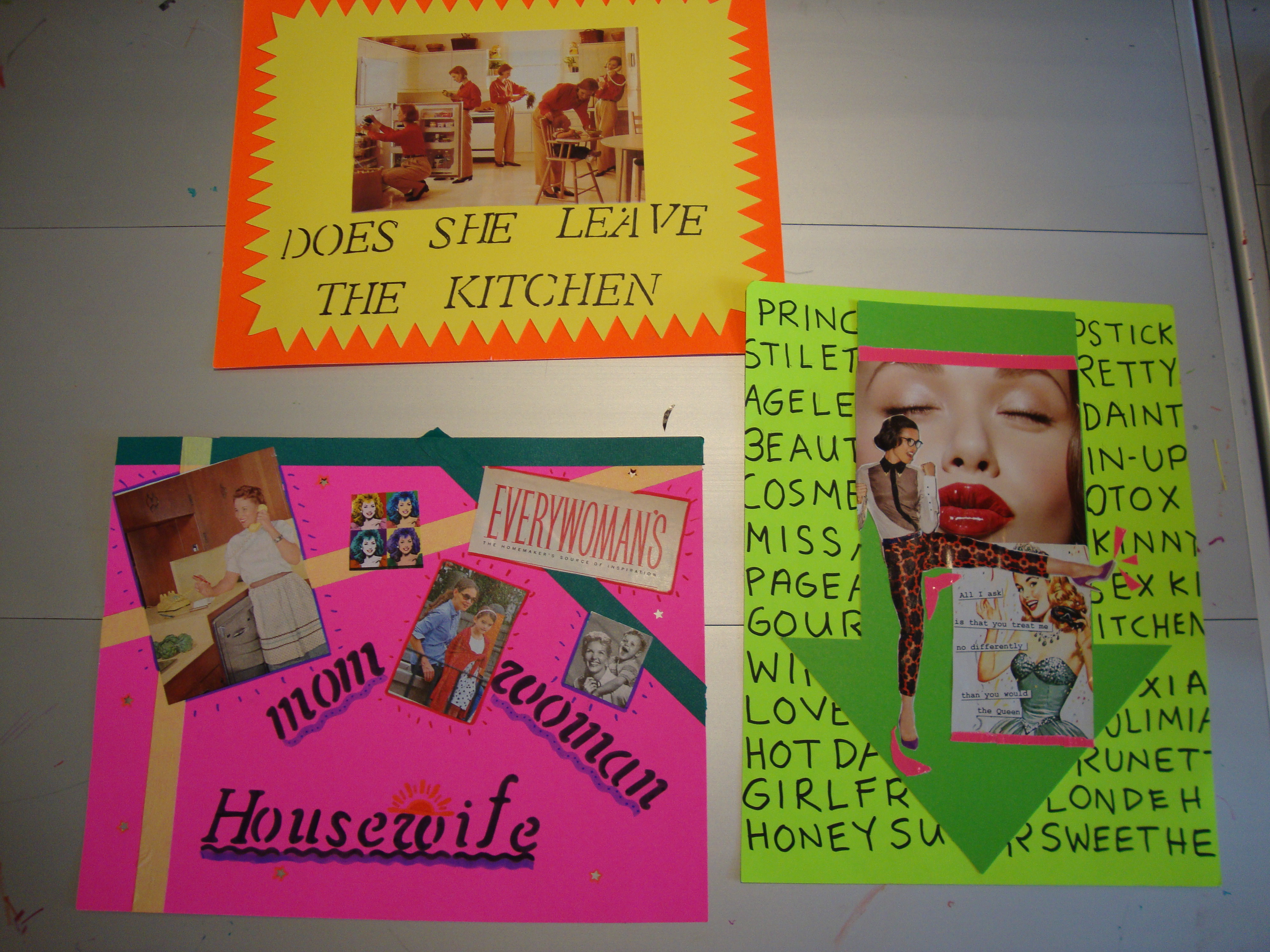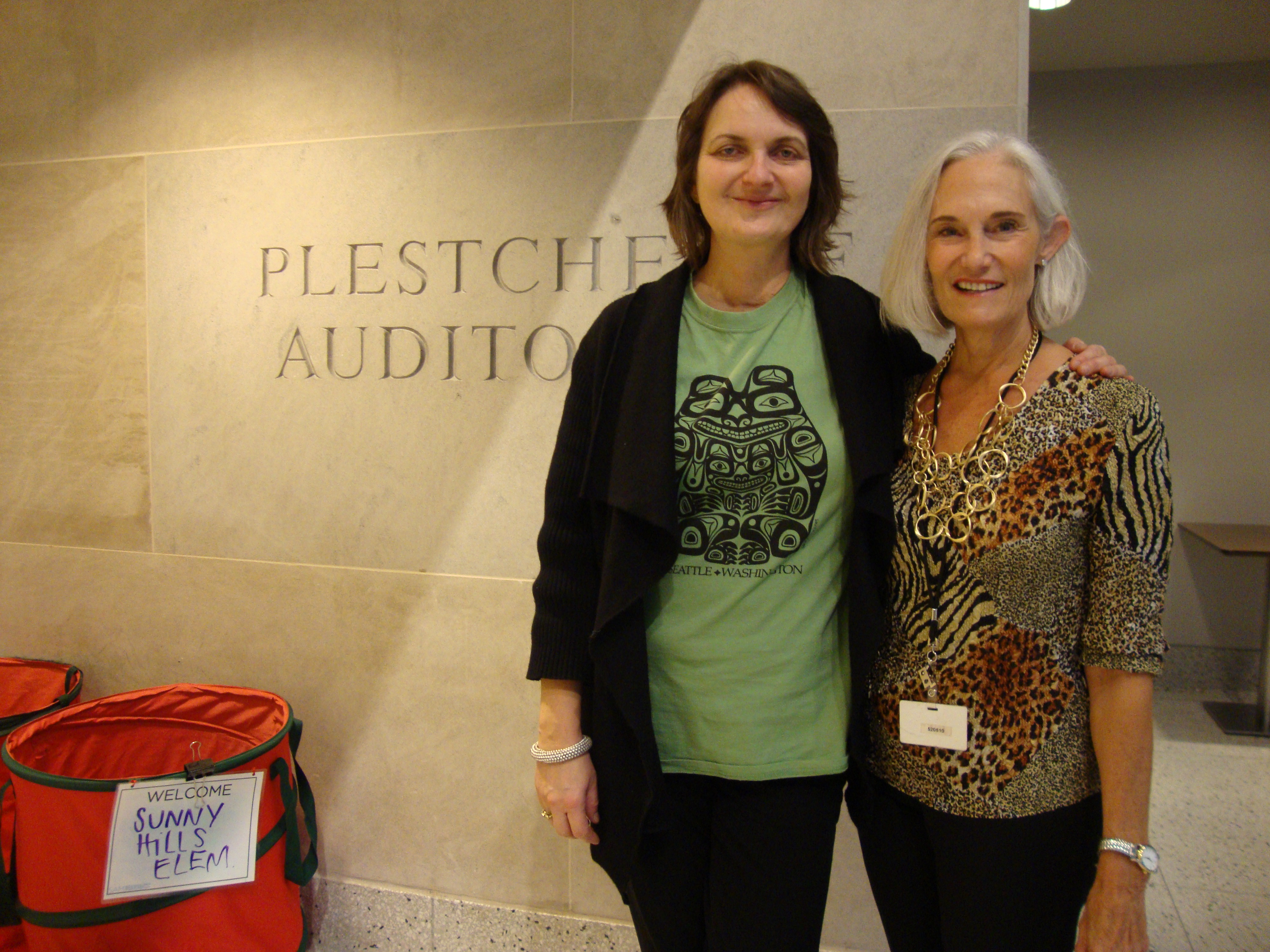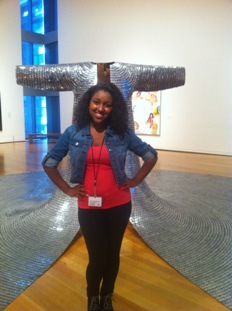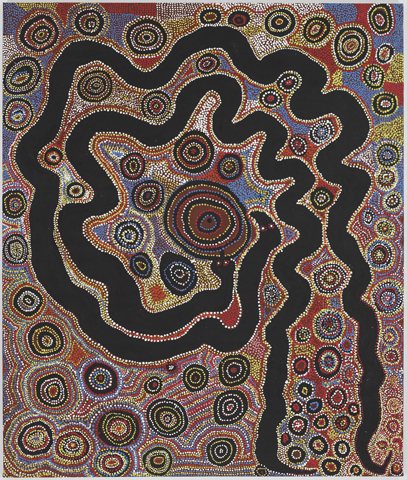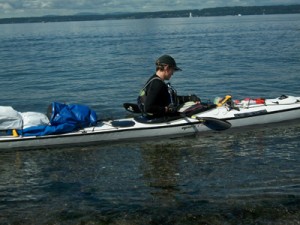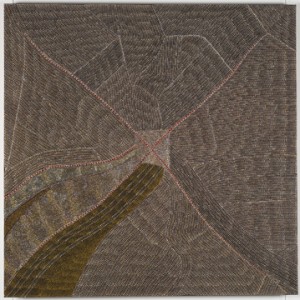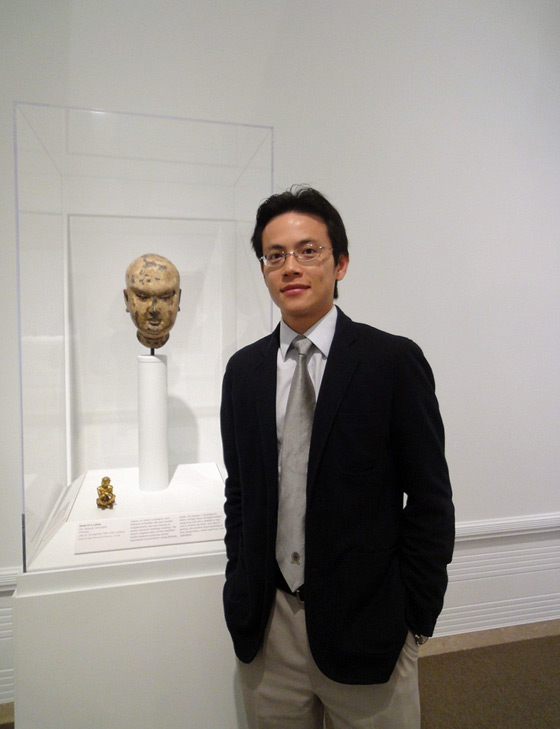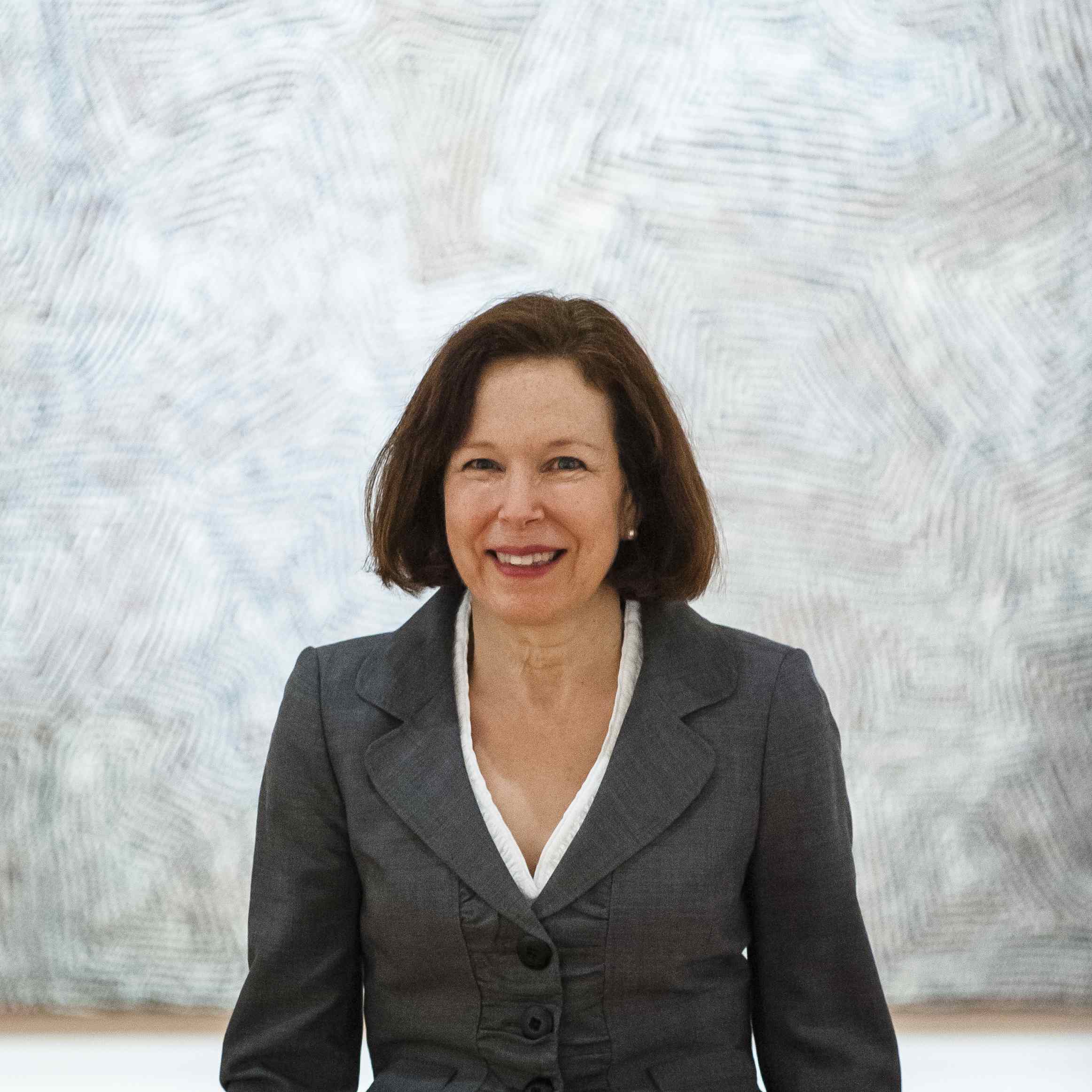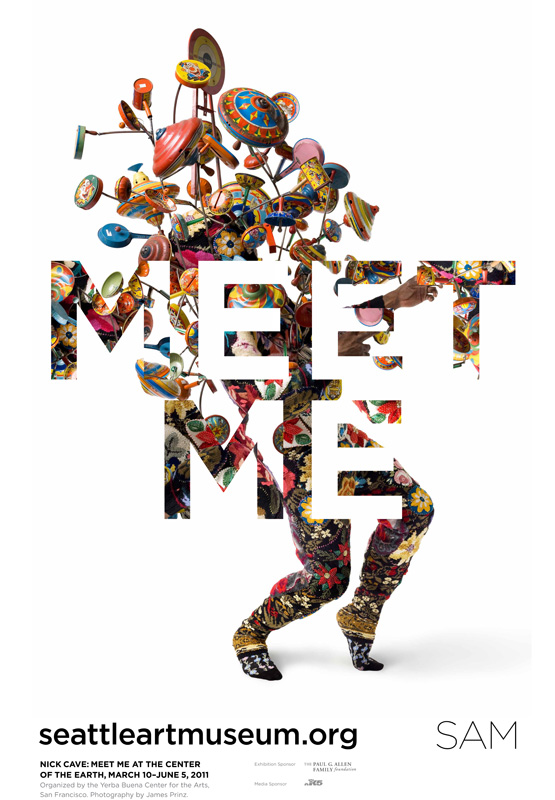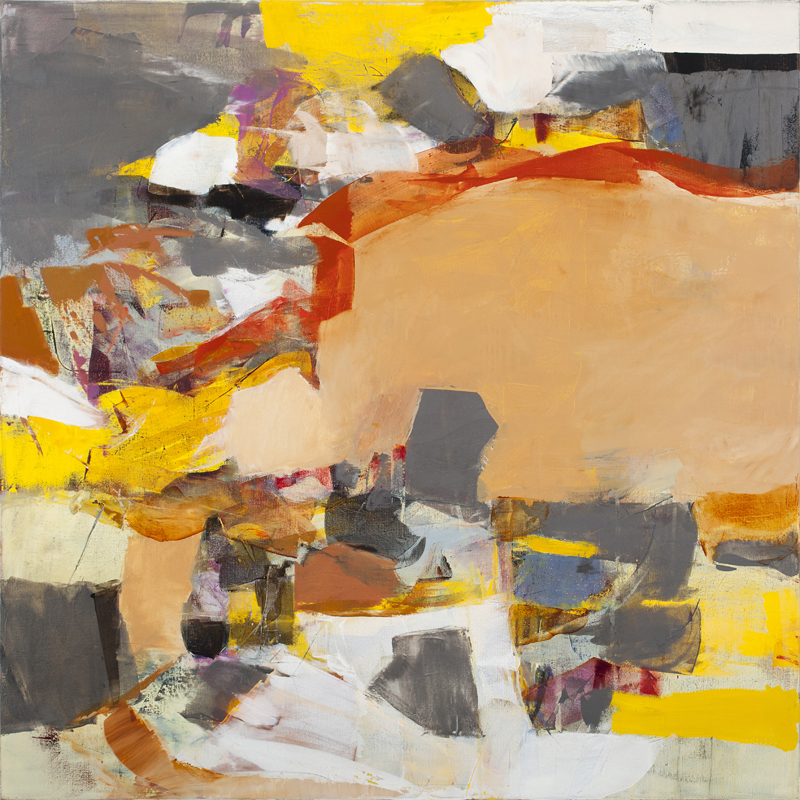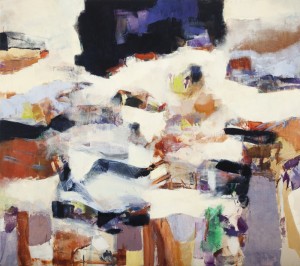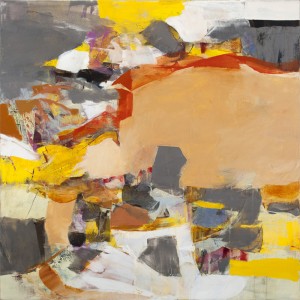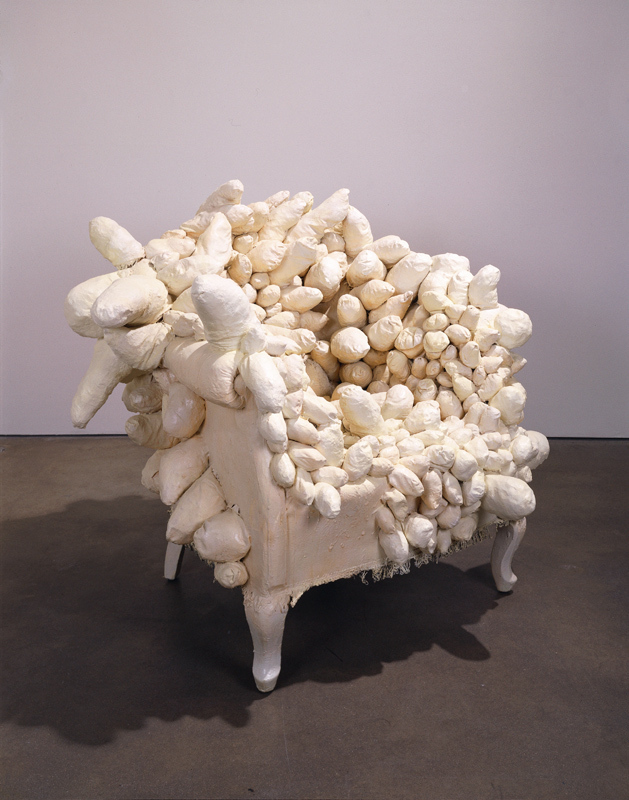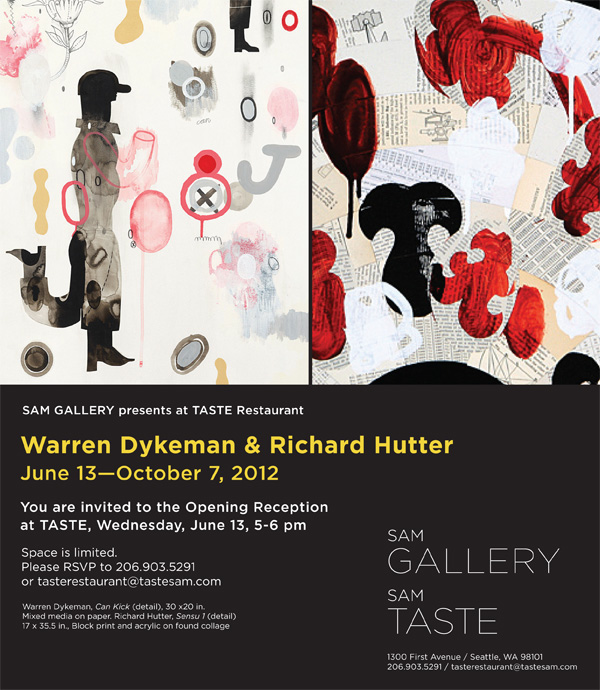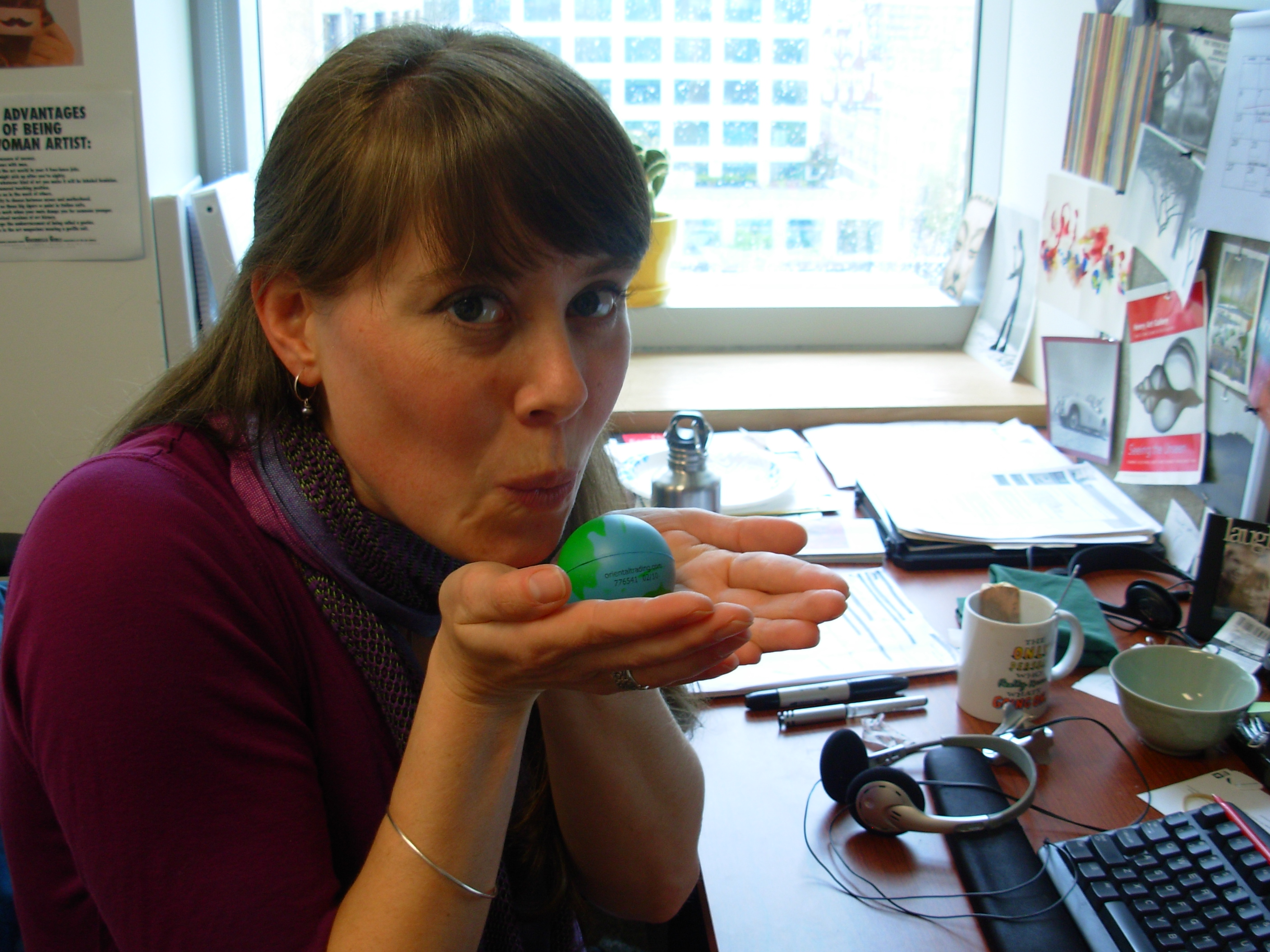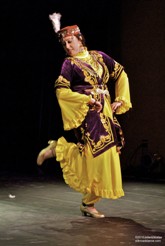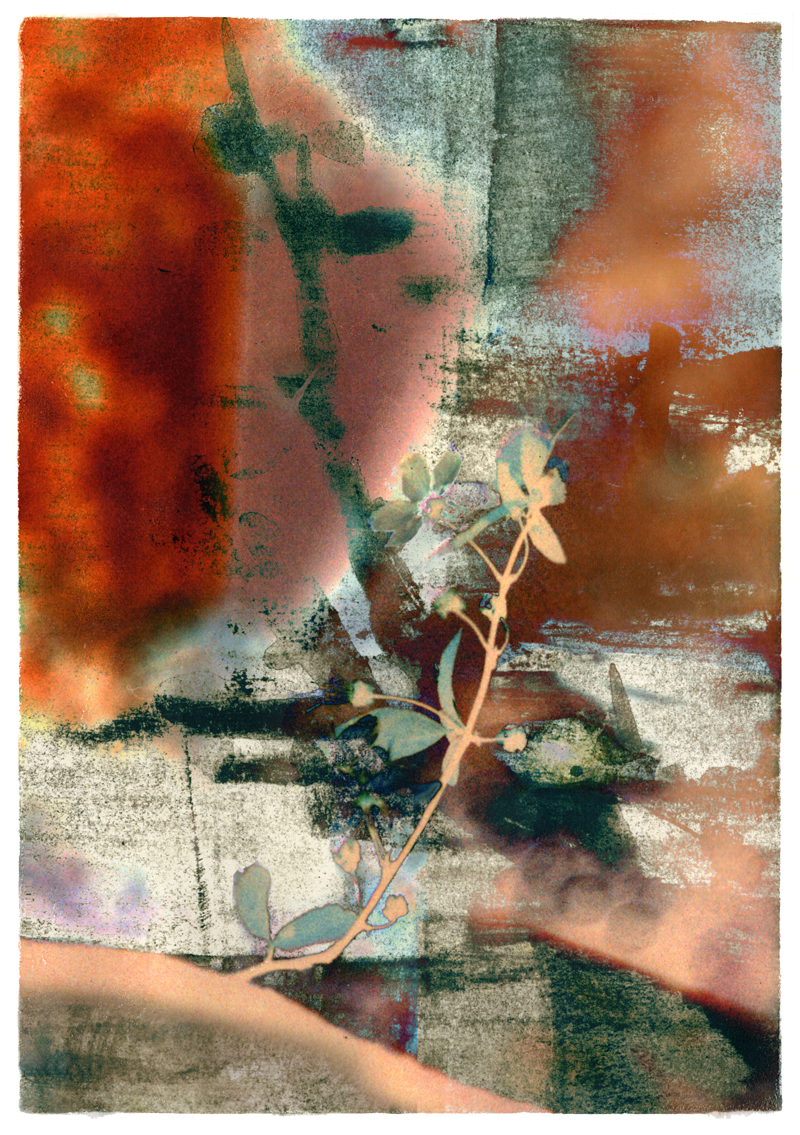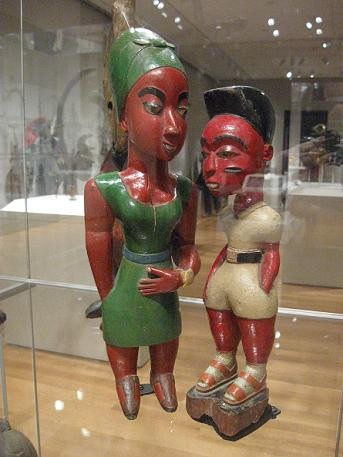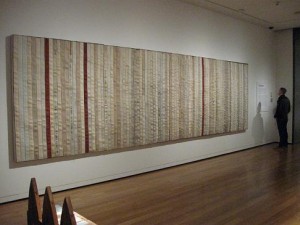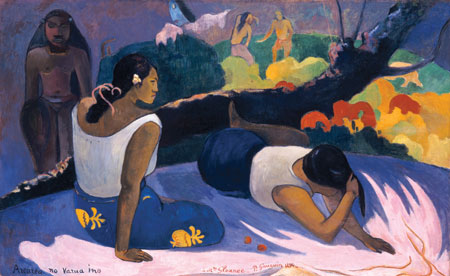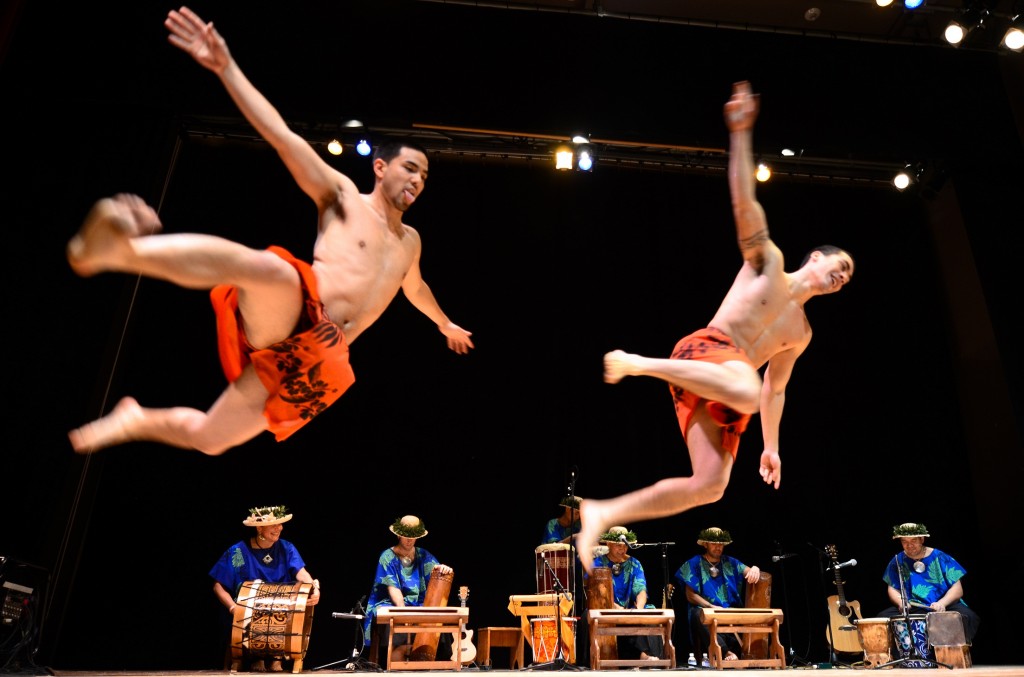On April 30, I begin exploring the inspiring installation on view at the Oceanic gallery. This gallery not only contains the unusual art of the Oceanic islands but also an unusual approach to viewing the work. The inclusion of commission installation pieces created by local Seattle artist Allyce Wood provides, as curator Pam McClusky explains, clues to the objects origins beyond the accompanying textual plaques. These objects, which were removed from their originally context to a museum context, are reunited with the visual elements of their initial environment. Part One, The Unique Installations in the Oceanic Gallery, examined the ways in which the installation connects the works to their native environment and functional cultural contexts. Part two continues the discussion with a behind-the-scenes perspective on the gallery exploring the mounting of these objects.
You may not initially realize that the Yam Masks are displayed on replica yams. Despite the huge size of those in the case compared what you’d expect from a grocery store, these yams are actually much smaller than the champion yams of Papua New Guinea’s Abelam people. Their yams reach heights of nine or even twelve feet! If you don’t believe me, the case text, or have trouble imaging a yam so large an accompanying photograph provides a visual of the yams: taller than their proud owner and nearly as tall as his house! The yams’ size demonstrates the conflict between the museum environment, the objects’ natural environment, and providing proper context. A museum environment dictates that objects should be approachable and so are displayed at an appropriate height. The natural environment for these masks would be mounted on tall yams, a biodegradable natural product where the mask is above our heads. This poses problems in a museum since the natural material would degrade and having the masks at a similar height would inhibit viewing. Their current context in the Oceanic gallery compromises these two methods by shrinking the size of the yams so they can display the mask within a similar context but at an approachable level, much like a manikin. Perhaps we should refer to these yams as, yam-ikins for the masks.
These yam-ikins, while mimicking the shape, color, and at least width of the yams, might look like a simple installation created by Allyce, but they double as an intricate and supportive mount for the masks. For one mask with a simple curved back the creation of the yam-ikin was fairly straightforward. The mount for the other mask is far more complicated. The process highlights the skill of the mount makers who need to capture the feel of the object in its environment without compromising its vitality. They must both present the object to the viewer, while restricting its motion and preserving the object for future generations.
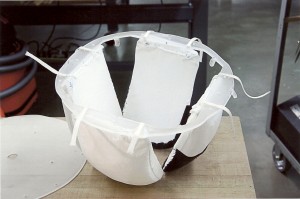
The Yam Mask’s “Pillow” Mount
The mask in question for this mount is beautifully woven. Its reds and yellows contrast against a rich dark black and a few of its original arching feathers remain. In order to accommodate the mask’s dome-shaped interior, mount maker Gordon Lambert created a “pillow” with flaps. The pillows fill the form of the mask, supporting the fibers without straining or stretching them. They are flexible and are attached to a frame with a hinge, so they can move and respond to the mask as needed. This support rests on aluminum tubes that provide vertical stability. Parts of the pillows that might be seen were painted black and to disguise an awkward connection between the base of the mask and the yam, Allyce created a grass necklace in the proper style. Allyce also created the yams, which wrap around the plain base to provide the masks their appropriate context on a yam.
Gordon noted how fun the yam-ikins were to create make due to its inventiveness and the challenges it created. Rebecca Raven, another mount maker, commented on the overall inventive nature of the mounts. For instance, the Asmat War Shields maintain their old steel L-mounts and were originally displayed facing forward in a line. Now the shields twist and turn. In order to turn the mounts for the new display, the mount makers required a specialized wrench to reach a bolt within a shallow space. As no wrench of this kind exists, they built a special one-of-kind wrench just for this project and the mounts for these war shields.
Other elements of mounting and installation deal with issues of conservation. While the Marquesan bone ornament, on displayed with the tattooed man and War club, would originally be hung around the man’s neck or head, conservation differences between the ornament and the club required their separation. Therefore the reproduced tattooed Marquesan could not both hold the club and be adorned with the ornament. The current separation between the man and the ornament allows the ornament to interact with the figure while not becoming lost in a crowd of objects.
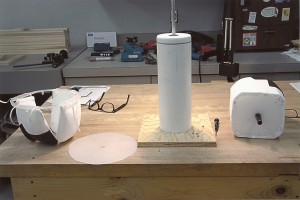
Each part of the mount is ready for final assembly!
Issues such as these demonstrate the complex problem solving for Rebecca and Gordon in regards to mounting the work. The added collaboration with the Allyce and her installations along with their collaboration with gallery designers and curators provided a new dimension to the mounts they often create. New problems had to be solved for these unique Oceanic objects so they could both be protected and appreciated. Their work with the Oceanic gallery prepped the team for the mounts they needed to create for the current exhibition Gauguin & Polynesia whose Polynesian materials are quite similar to those in SAM’s Oceanic gallery. However, as Pam notes, the permanent Oceanic gallery provides longevity for the museum and the Oceanic collection as opposed to the fleeting views the special exhibition offers.
From the unique installation elements that provides visual context to the arts so far removed from their original, non-museum context to the mounting of these pieces we learned so much about the process of creating such a unique and beautiful display for SAM’s Oceanic collection. The considerations, effort, and preparation that all occurred behind-the-scenes for this seamless viewing, is incredible. Each element of the gallery—the installations, the Oceanic art, the mounts, the information panels—come together creating an inviting environment that transports the viewer away from Seattle and onto the islands of the Pacific Ocean.
Be sure to check out the final product! The Oceanic Gallery is located on SAM’s third floor.
– Sarah Lippai, Public Relations Intern
Top photo: Styrofoam Model of a Yam Mask

